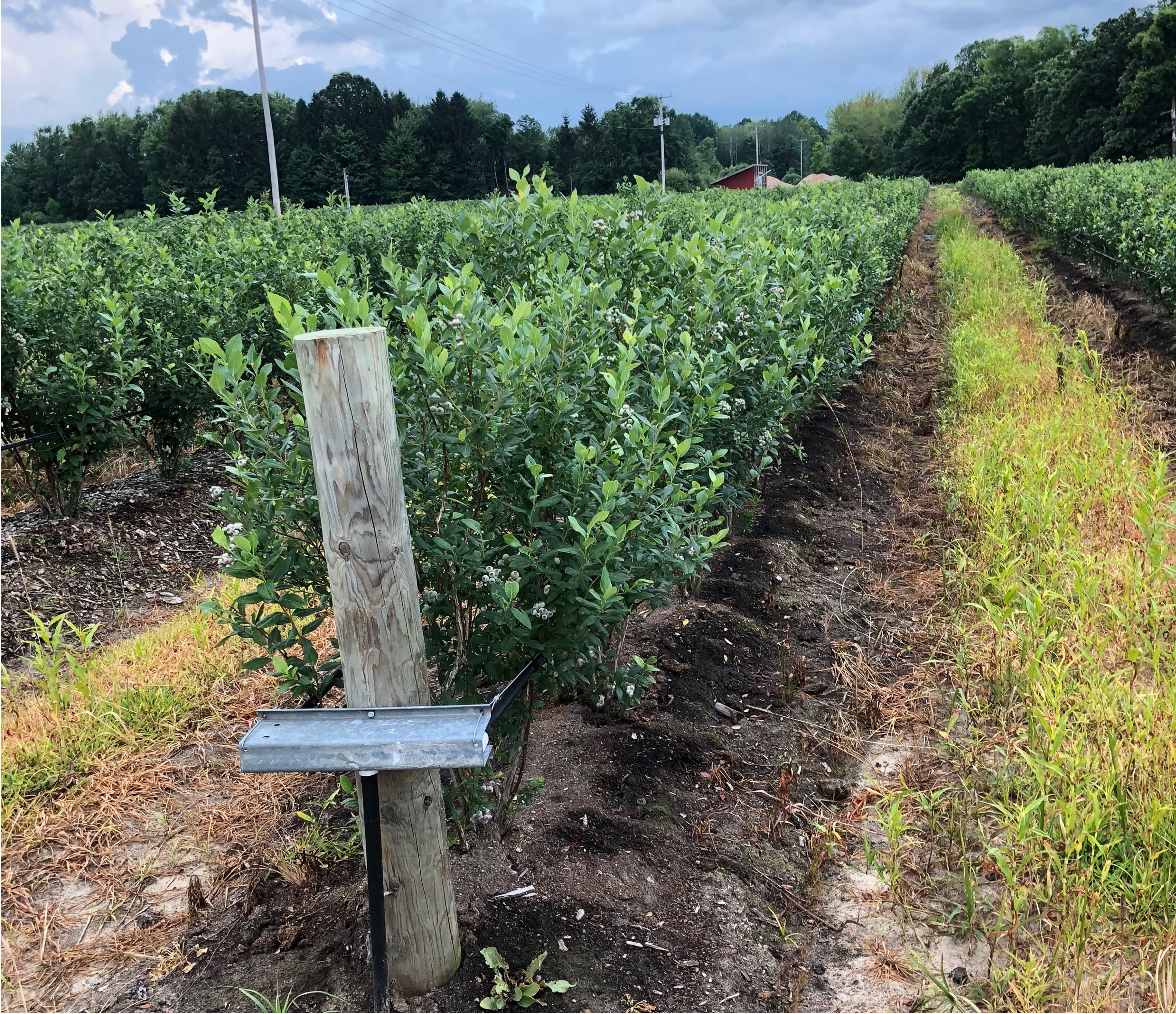MSU plant pathologist awarded $3.95M USDA grant to examine fruit rot in blueberries
Timothy Miles, an assistant professor in MSU's Department of Plant, Soil and Microbial Sciences, is teaming up with researchers across the U.S. to further study management of Anthracnose and Botrytis fruit rot in blueberries.

East Lansing, Mich. — A scientist at Michigan State University has received a $3.95 million grant from the U.S. Department of Agriculture (USDA) National Institute of Food and Agriculture (NIFA) to develop strategies for implementing and maintaining effective management practices for blueberry fruit rot.
Timothy Miles, an assistant professor in MSU’s Department of Plant, Soil and Microbial Sciences, is leading a multi-institutional team of researchers in addressing ways to improve the quality of blueberries while limiting their loss before, during and after harvest.
The USDA-funded project, part of the USDA’s Specialty Crop Research Initiative (SCRI), is called: “BLUE-DYNAMO: An Interactive Platform to Deliver Blueberry Disease and Horticultural Management Strategies for Fruit Rots.”
Blueberries are sometimes referred to as “little blue dynamos” due to their health benefits. In this case, “BLUE-DYNAMO” is an acronym that stands for, “Building the Latest Understanding in Extension — Disease Management that Yields New and Meaningful Outputs.”
Michigan is a top producer of blueberries in the U.S. with more than 20,000 acres in production, according to the Michigan Ag Council. The industry also contributes roughly $132 million to the state’s economy.
Two of the most common fruit rot diseases that alter the quality and yield of blueberry crops in the U.S. are Anthracnose fruit rot (AFR) and Botrytis fruit rot (BFR). AFR, also known as “ripe rot,” shows itself by wilting blueberries and producing spore masses that appear as orange speckles. BFR typically occurs in cooler temperatures and presents as gray mold on blueberries and other crops.
While much is already known about these diseases through previously conducted studies, Miles said advances in technology and joint action among scientists from across the country will propel current knowledge forward and address stakeholder needs.
“What makes this research unique is that it’s a coordinated effort (from multiple institutions) to study fruit rot across the U.S., and in blueberries that hasn’t happened before on this large of a scale,” Miles said.
Objectives of the project include:
- Learning how management techniques impact the onset of fruit rot.
- Applying molecular tools to accelerate the time it takes to detect fungicide resistance in pathogens.
- Generating cultivar-specific fruit quality models to predict fruit vulnerability to rots, and using optical-imaging technology to filter and sort blueberries vulnerable to fruit rot.
- Providing efficient ways growers and field specialists can access information drawn from the conducted research.
To make findings and recommendations easily and widely available, a BLUE-DYNAMO website is being designed that’ll allow for materials to be uploaded for educational and outreach purposes.
“Anything we find using this grant — grower information, important publications and other resources related to fruit rot — will be in here,” Miles said. “We may also build this into more than just information about fruit rot because it’s supposed to be a portal growers can use to gain knowledge on how to manage blueberry diseases.”

Other MSU researchers included in the grant are Josh Vander Weide, an assistant professor in MSU’s Department of Horticulture; Yuzhen Lu, an assistant professor in MSU’s Department of Biosystems and Agricultural Engineering (BAE); and Cheyenne Sloan, a blueberry and small fruit educator with MSU Extension.
Along with studying pathogens and ways to manage them, scientists will create more refined models for pinpointing the ripeness in blueberries to prevent fruit rot from occurring in harvested berries. New imaging technology will also be tested to noninvasively screen blueberries for disease as they’re sorted.

Vander Weide said examining horticultural strategies to control fruit rot could lessen fungicide use, which is critical because fruit rot pathogens can become resistant to fungicides over time.
“Fruit rots tend to develop near harvest, so there are some practices we can employ to minimize disease pressure,” Vander Weide said. “This not only involves better defining which cultivars are more resistant (to these pathogens), but also what kind of harvest scenarios prolong disease development.”
Vander Weide said the team will be observing how pathogens develop in relation to the weather conditions blueberries are grown in and the maturity at which they’re picked. He also noted that collaborating with researchers from across the country grants opportunities to track an array of environments blueberries are farmed in.
“A greater percentage of fruit rot development occurs in the cartons you’re buying from the grocery store than on the plant,” Vander Weide said. “That’s why sometimes when we buy blueberries from the store, they’re moldy within a few days. The likelihood that this occurs depends on the cultivar, as well as when they’re harvested and how far they’re shipped.”
After harvest, Vander Weide said they’ll use cutting-edge technology to sort blueberries, separating ones that’ve been infected or are more likely to become infected with fruit rot based off certain qualities of the fruit, like firmness.
The grant provides funding for four years. Miles said he’s excited to lead this project on a broad scale because it was also his project while earning his doctoral degree from MSU in 2011 studying fruit rot in blueberries.
Michigan State University AgBioResearch scientists discover dynamic solutions for food systems and the environment. More than 300 MSU faculty conduct leading-edge research on a variety of topics, from health and climate to agriculture and natural resources. Originally formed in 1888 as the Michigan Agricultural Experiment Station, MSU AgBioResearch oversees numerous on-campus research facilities, as well as 15 outlying centers throughout Michigan. To learn more, visit agbioresearch.msu.edu.



 Print
Print Email
Email




